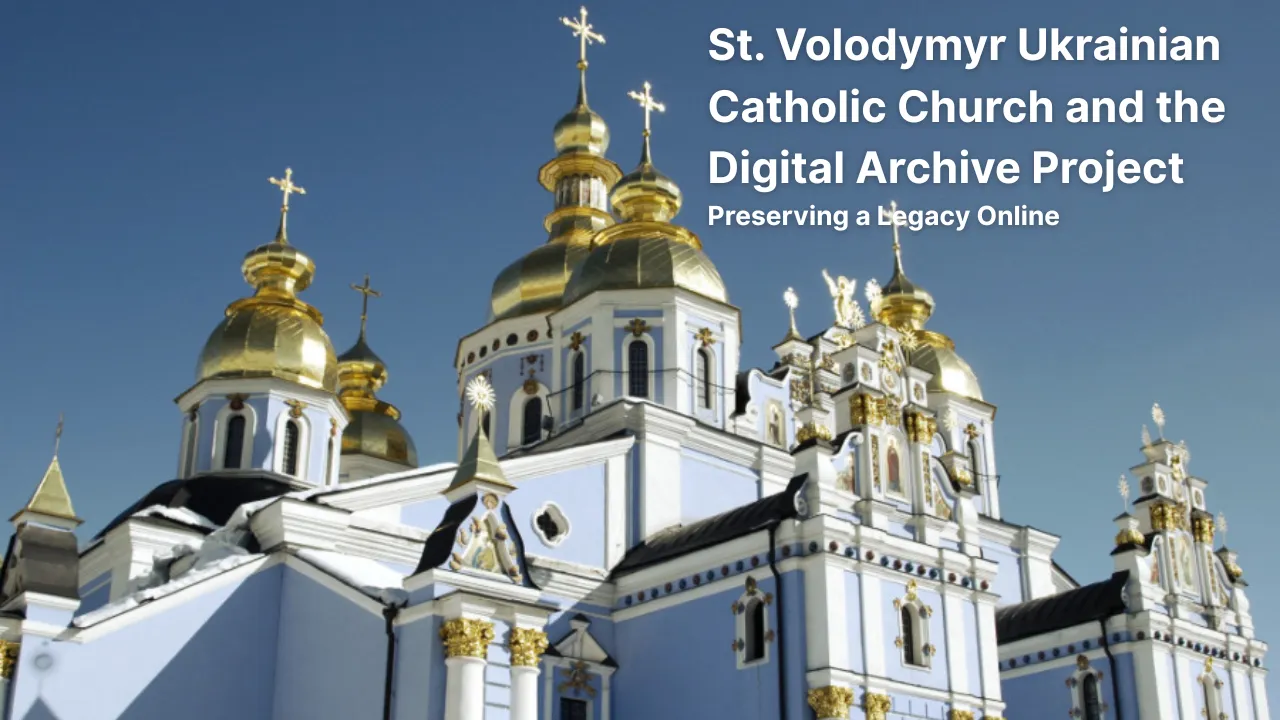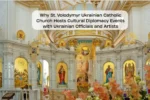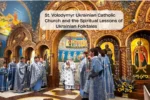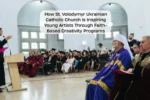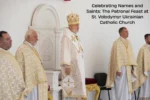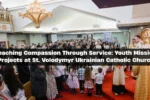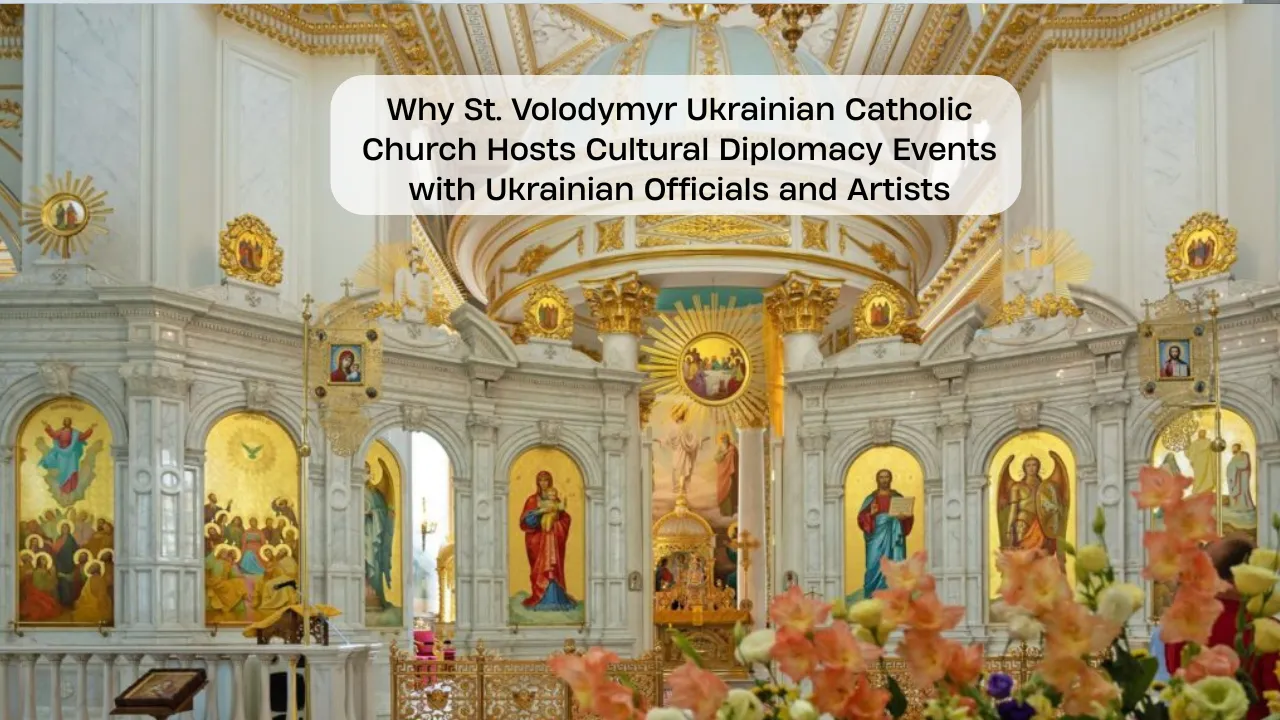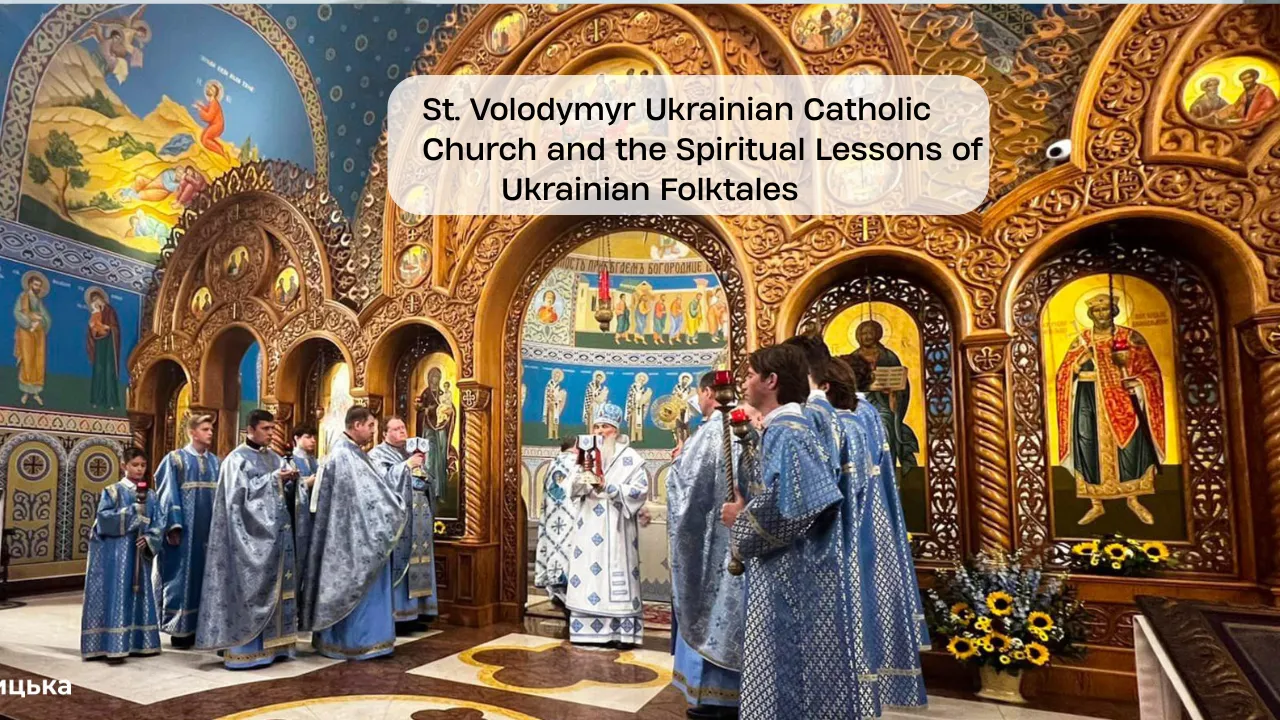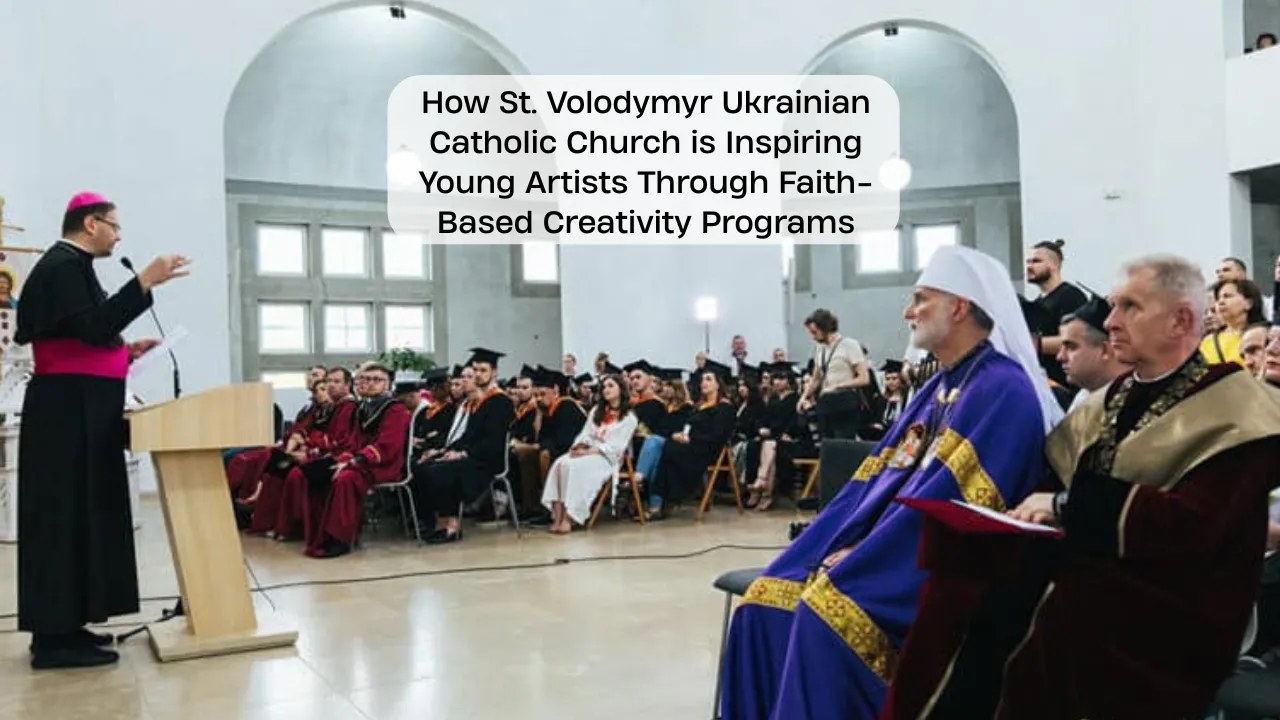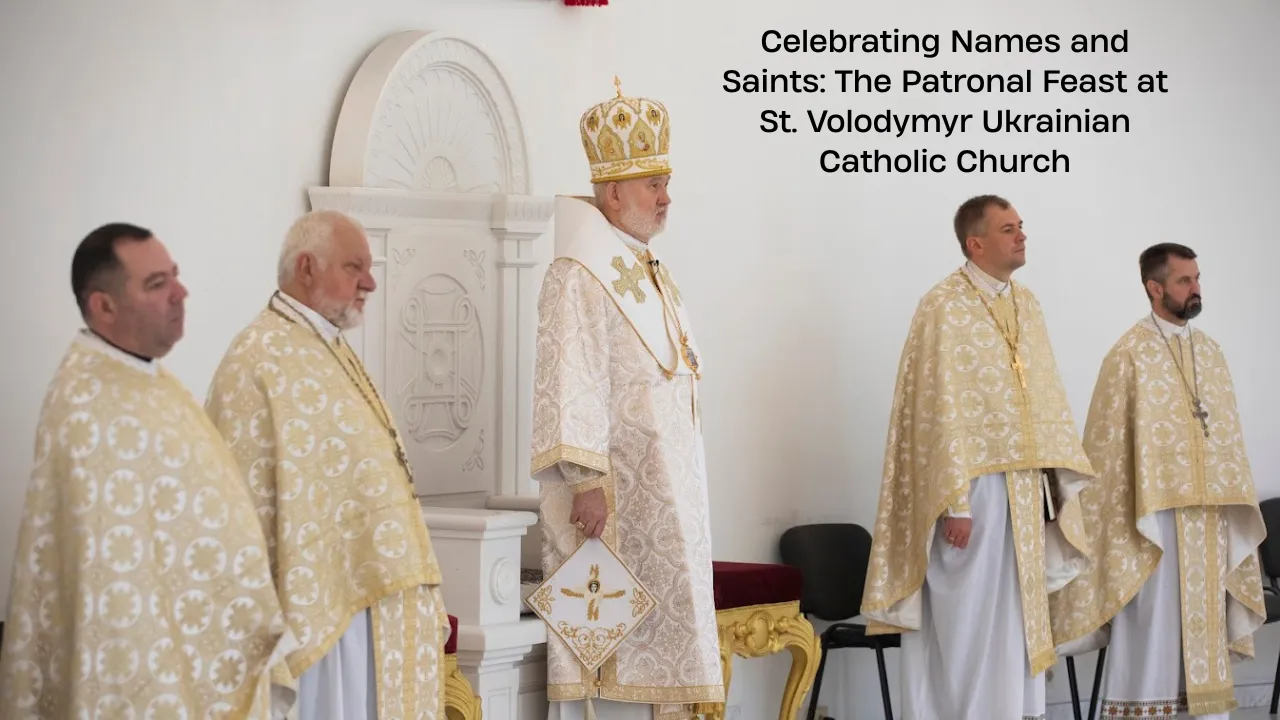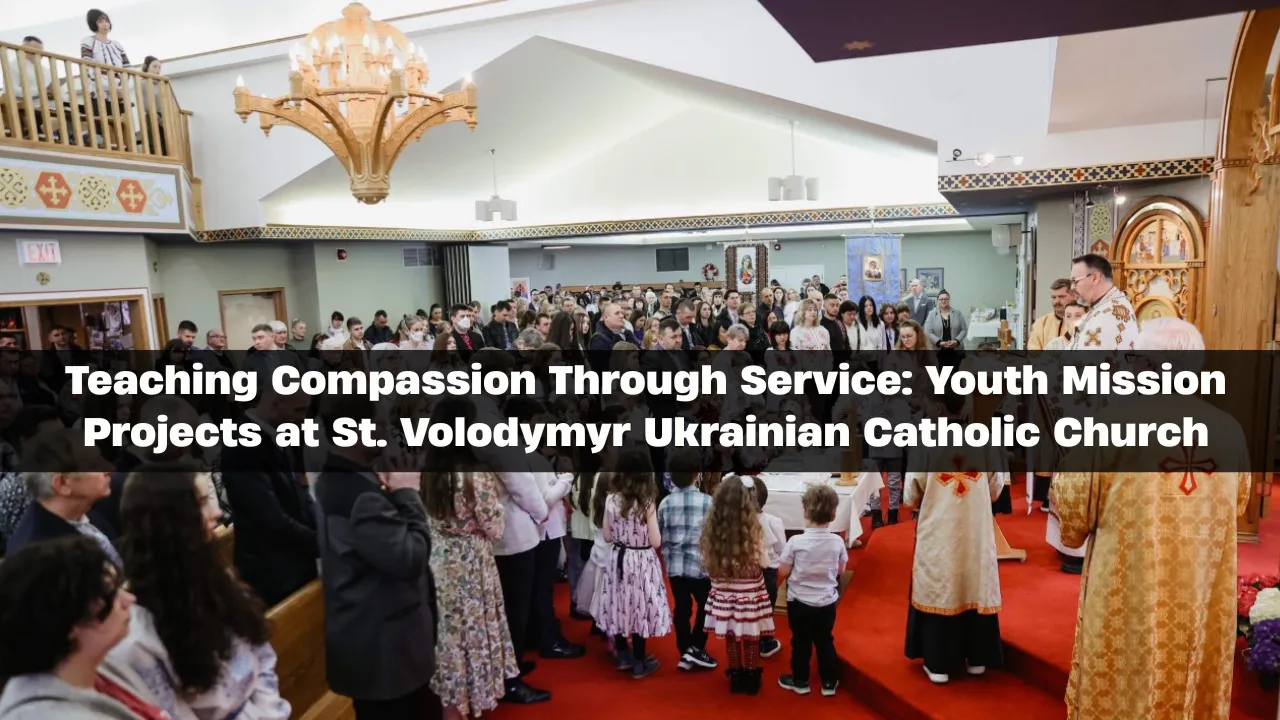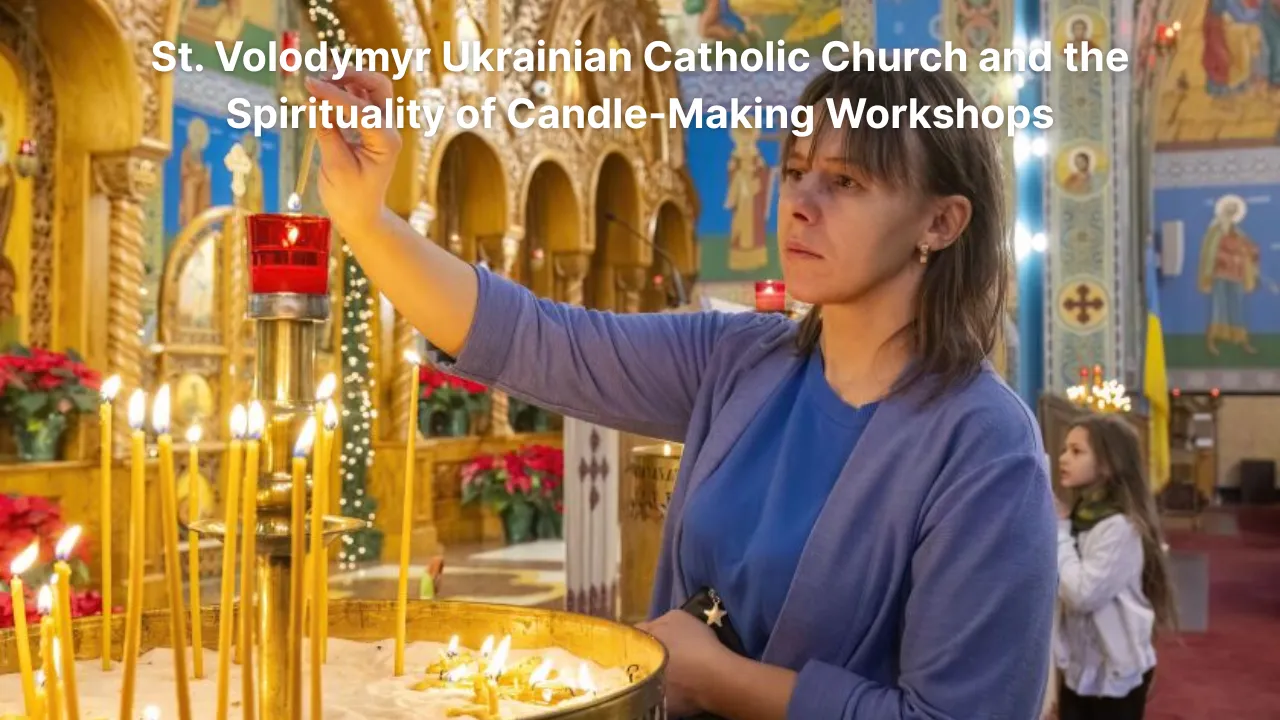Digital Archive Project: Digital Archive Project efforts are reshaping how communities preserve and share their most treasured memories and spiritual milestones. In today’s digital era, where physical records are at constant risk from decay, disaster, or neglect, the push to protect and promote historical identity has found a new home online. Religious institutions, especially those rooted in rich cultural traditions, are recognizing the value of digital preservation as a bridge between past and future.
St. Volodymyr Ukrainian Catholic Church, long a symbol of faith and heritage, has undertaken a pioneering initiative to safeguard its unique legacy. This article dives into how the church is digitizing its vast collection of archival materials — including old photographs, sacred texts, and personal letters — and creating an online space for education, remembrance, and cultural connection. We’ll explore the tools, community involvement, and future plans surrounding this thoughtful and forward-looking project.
Digital Archive Project at St. Volodymyr Ukrainian Catholic Church
The Digital Archive Project at St. Volodymyr Ukrainian Catholic Church is a major initiative aimed at digitally preserving the church’s historical records and cultural artifacts. By scanning, cataloging, and storing materials such as religious documents, photographs, and liturgical texts, the project ensures these items remain accessible and intact for generations. This effort not only protects delicate archival materials from physical degradation but also offers global access to anyone interested in the church’s Ukrainian roots, faith traditions, and community journey. Through this digital platform, the church turns preservation into participation, welcoming users into a living history that is rich, searchable, and ever-growing.
Overview of Digital Archive Project Activities
| Key Area | Description |
| Digitizing Photographs | Scanning historical images of church events, families, and clergy |
| Sacred Texts | Preserving liturgical books and handwritten religious materials |
| Archival Organization | Cataloging documents with metadata and descriptions for easy navigation |
| Public Access | Launching an online archive available to the public, historians, and youth |
| Community Involvement | Engaging parishioners to contribute items, stories, and volunteer efforts |
The Importance of Digitizing Church Archives
Preserving church archives is not a luxury — it’s a responsibility. For communities like St. Volodymyr Ukrainian Catholic Church, whose history is closely tied to immigration, identity, and faith, these records are a vital part of cultural memory. Old baptismal certificates, parish bulletins, marriage registers, and festival photographs carry more than administrative value; they tell the story of a resilient and vibrant community.
Digitization allows fragile documents to survive the passage of time. Paper yellows, ink fades, and photos deteriorate, but with the Digital Archive Project, these once-vulnerable items become permanent digital files. This not only safeguards them against physical threats but also makes them accessible far beyond the church walls — to descendants, scholars, and anyone seeking connection with Ukrainian Catholic heritage.
Tools and Techniques Used in the Digital Archive Project
To bring its vision to life, St. Volodymyr Church uses a blend of modern technology and old-fashioned care. Flatbed and overhead scanners with high DPI (dots per inch) are employed to capture fine detail in handwritten documents, sepia-toned photos, and faded newspapers. Color correction and digital cleaning tools are used to enhance legibility without altering the content.
Each file is then tagged with metadata, including names, dates, events, and brief descriptions. This makes the database searchable and organized. A secure cloud-based archival system ensures backups are maintained and storage remains stable. The church has partnered with archival consultants to train volunteers on digitization best practices and software use, ensuring that quality remains high and errors are minimized.
Engaging the Community Through Digital Archives
The heart of the Digital Archive Project is its people. What makes this initiative truly stand out is its deep integration with the church community. From elderly parishioners sharing stories to youth volunteers scanning documents after school, the entire process has become a living collaboration.
Community members are encouraged to submit old family photos taken on church grounds, copies of confirmation certificates, and even hand-written prayers or letters. These contributions breathe life into the archive. It’s not simply a static record but a living history that evolves with each new addition. Events like “Scan-a-Document” days invite participation and create awareness around the value of preservation.
Benefits of Digital Archiving for Future Generations
The long-term impact of this work is profound. Through digital access, younger generations who may have moved away or grown up in different cultures can explore their spiritual and cultural roots at any time. It helps bridge the generational gap, allowing today’s youth to explore the lives, values, and events that shaped their ancestors’ faith and identity.
Liturgical materials — some of which are in old Ukrainian script or early English translations — become available for educational use, theological studies, or simple personal reflection. Students writing essays on immigration history or religion can use these archives as primary sources. The Digital Archive Project turns the church’s legacy into a meaningful educational resource and a bridge between culture and curiosity.
Key Areas Covered in the Digital Archive Project
- Historical Photographs
Images from early 20th-century parades, church construction, family sacraments, and community gatherings are preserved and made available for both viewing and download. Each photo tells a unique piece of the community’s visual story. - Liturgical Texts and Materials
Items such as hymn books, missals, and prayer cards — often annotated or passed down through generations — are scanned and digitally stored. They serve not only as historical records but as usable materials for today’s religious services or private devotion.
Challenges and Solutions
Of course, no major project is without hurdles. Many older documents are extremely fragile or water-damaged. The church addressed this by acquiring specialized flatbed scanners that don’t require full contact and by consulting conservators when needed.
Another challenge lies in technological literacy. Not every volunteer is familiar with scanning software or metadata standards. To resolve this, the church created step-by-step guides and scheduled digital literacy training. A tech-savvy team supports ongoing uploads and platform updates to keep the archive smooth and searchable.
The Role of Volunteers and Donors
The beating heart of this initiative is the network of volunteers who give their time, patience, and passion to the project. Whether organizing folders, researching names, or assisting with website development, their involvement is what keeps the archive growing. Donors also play a crucial role, providing funding for scanners, external hard drives, and digital storage services.
This collaboration underscores what the Digital Archive Project really represents — not just data preservation, but a community’s shared commitment to remembrance, identity, and learning.
Future Plans for the Digital Archive Project
The next phase of the project aims to expand its scope. Plans are underway to include voice recordings of elder parishioners recounting life in the early church days, digitized video footage of past processions and feasts, and multi-language descriptions for broader accessibility.
Additionally, a searchable family genealogy tool is in development, allowing users to trace lineage and locate relatives mentioned in church records. These enhancements will make the archive even more interactive and meaningful for future users.
FAQs
What is the Digital Archive Project?
It’s an initiative by St. Volodymyr Church to digitally preserve its historical records, religious texts, and community artifacts.
How can I access the digital archive?
The archive is accessible through the church’s official website. It’s free for public viewing and regularly updated with new materials.
Can I submit my family’s historical materials to the archive?
Yes, the church welcomes contributions from families connected to the parish. All items are reviewed and handled with care before being digitized.
What if I want to help with the project?
Volunteers are welcome. Whether tech-savvy or not, training is provided. Donations are also appreciated for equipment and hosting costs.
Is the archive only for church members?
No, anyone interested in Ukrainian heritage, religious history, or community studies can explore the archive.
Final Thought
The Digital Archive Project at St. Volodymyr Ukrainian Catholic Church proves that tradition and technology can work hand in hand. By digitizing its sacred texts, personal records, and cultural artifacts, the church has opened a new door to its past — one that anyone, anywhere, can walk through. It’s not just about saving paper; it’s about honoring a living faith, a vibrant community, and the generations still to come.
Have a memory, document, or question to share? Visit the church’s digital archive and become part of this living legacy.
